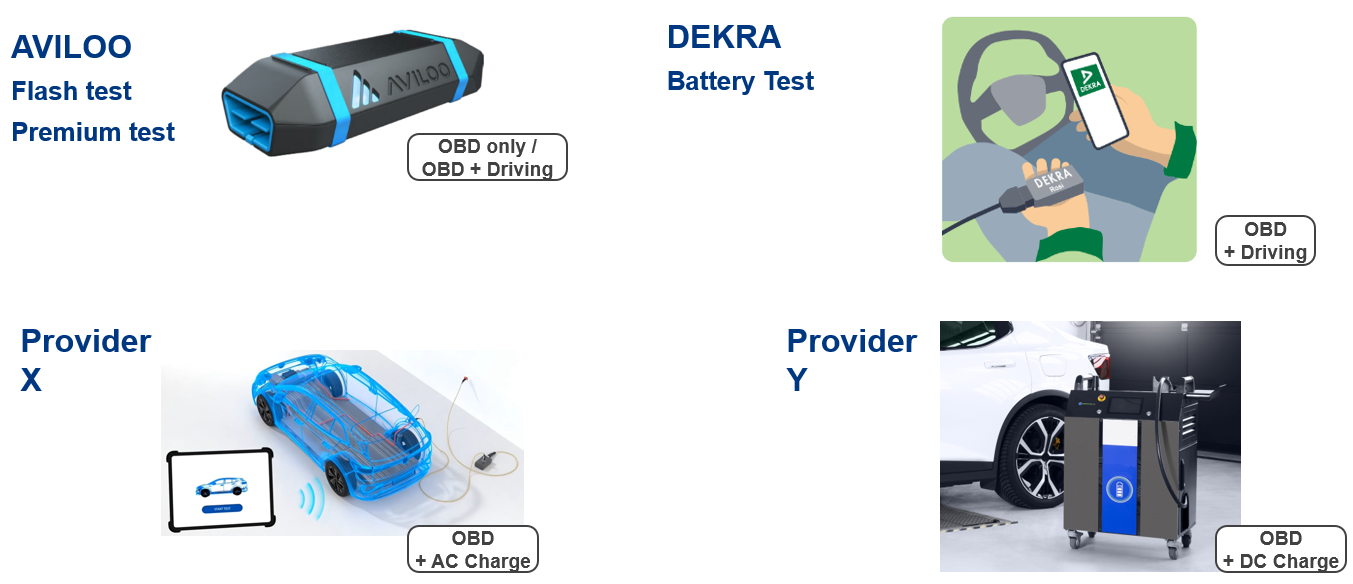Topics at the Allianz Center for Technology:
Measurement of the State of Health (SoH) of a high-voltage battery at AZT

Charging process (AI generated image)
August 2024
The so-called State of Health (SoH) of a car’s high-voltage battery is a parameter that interests many stakeholders - the industry, body shops, insurers and of course the car owners and which is clearly more decisive than mileage.
All batteries age over time and by usage, but not all batteries are affected in the same way, the type of chemistry as well as charging and discharging parameters affect the ageing of a vehicle’s traction battery.
Unfortunately vehicle owners typically do not have access to information on their battery’s SoH from the onboard information system. Still worse, there is no common understanding which data is relevant for SoH and no standardised measurement method is established. However, in Europe a raising number of third-party providers offer measuring tools and “certificates” to document battery health.
In a first assessment AZT evaluated what the current providers for SoH-testing are capable of, based on a benchmark test. We chose 4 providers and 10 cars to make 30 test runs in total. The effort for the test varied from about 15 minutes to a full charge and discharge, taking rather days than hours.
The results showed cases, where the battery allegedly scored over 100%, then there were cases with considerable health degradation. In one case the difference between the providers was as high as 10%.
Since there is no common standard for determining the SoH, the rating methods are different and might explain the spread of results. In fact, some providers only consider the capacity, others factor in the internal resistance, which seems more reasonable.
AZT’s most important but trivial finding is, that a common definition of an EV’s battery health is dearly needed in the interest of our customers. The spread of results as well as the delivered technical background is insufficient today and AZT will continue to communicate this unsatisfying situation towards the industry.

Overview of available tools and methods for SoH assessment